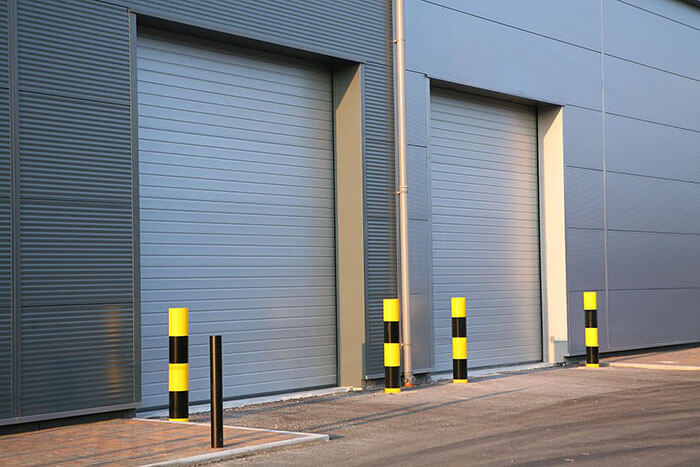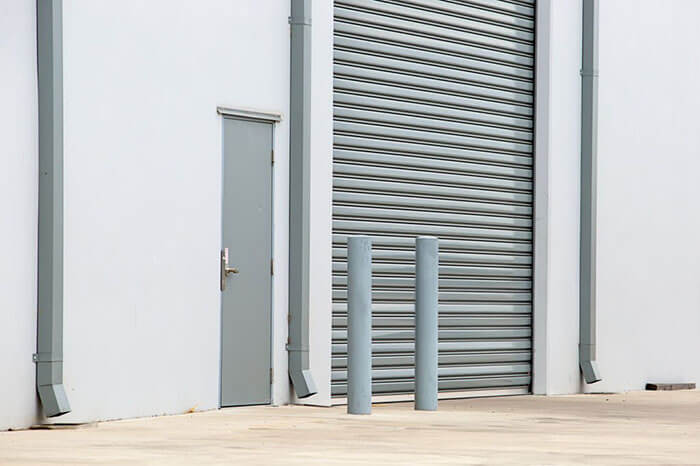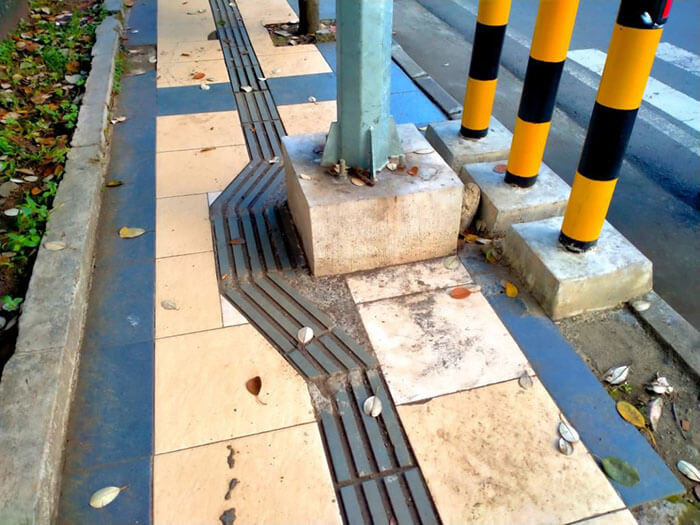Introduction
The best bollards for industrial facility protection are essential for safeguarding high-traffic zones in modern industries. From protecting sensitive equipment to ensuring the safety of workers, bollards play a crucial role in minimizing risks and controlling access.
In today’s fast-paced industrial environments, bollards serve not only as physical barriers but also as essential safety tools. They prevent unauthorized vehicle access, reduce the chances of accidents, and protect critical assets.
Here’s why the best bollards for industrial facility protection are vital:
- Prevent Damage: They safeguard property and equipment from vehicle impacts.
- Enhance Safety: Bollards protect employees and pedestrians in busy industrial zones.
- Control Access: Strategic bollard placement helps in controlling and guiding traffic flow, reducing congestion and preventing accidents.
In this guide, we’ll dive into why choosing the right bollards is crucial for industrial facility protection and how to make informed decisions for your unique setup.
Stay tuned as we explore the best options available for industrial facility protection.

Why Bollards Are Essential for Industrial Facility Protection
The Critical Role of Bornes in Industrial Facility Safety
Bornes are more than just barriers; they are critical tools for safeguarding both property and people in industrial environments. Whether it’s protecting machinery from accidental collisions or ensuring that pedestrian areas remain secure, bollards play a key role in enhancing overall safety. In facilities where heavy vehicles operate, the risks of unintended impacts are high, making bollards an indispensable safety measure.
Here’s why they are crucial:
- Vehicle Control: Industrial facilities often require clear separation between pedestrian zones and vehicle routes. Bornes guide traffic and prevent vehicles from entering restricted areas.
- Accident Prevention: By strategically placing bollards in high-traffic areas, companies can significantly reduce the risk of accidents, especially involving forklifts and heavy machinery.
- Asset Protection: Expensive equipment and infrastructure can be damaged by vehicle impacts. Bornes provide a sturdy defense against these risks, saving companies from costly repairs.
Key Benefits of Installing Bornes in Industrial Zones
Industrial facilities face a range of challenges when it comes to managing safety. Here are some of the key benefits of installing bollards for protection:
- Machinery Protection: Shield critical machinery from being hit by forklifts or other heavy vehicles.
- Sécurité des piétons: Clearly define walkways and prevent vehicles from encroaching on pedestrian areas, reducing the likelihood of accidents.
- Traffic Control: Direct and control the flow of vehicles, ensuring that delivery trucks, forklifts, and other equipment stay within designated lanes.
- Cost Savings: Reducing vehicle-related accidents translates into fewer repair costs for damaged property and less downtime in operations.
- Regulatory Compliance: Many safety regulations require barriers like bollards in high-risk areas to comply with local safety standards.
Incorporating the best bollards for industrial facility protection ensures that companies not only protect their assets but also create a safer working environment for employees and visitors.
Types of Bornes for Industrial Facility Protection
Bornes fixes for Permanent Protection
When it comes to long-term security and durability, fixed bollards are the go-to choice for industrial facilities. These bollards are installed permanently into the ground, offering a robust solution that is difficult to bypass. Fixed bollards are ideal for areas where vehicle access must be completely restricted, such as near expensive equipment or sensitive infrastructure.
Key features of fixed bollards:
- Permanent Protection: Designed to stay in place permanently, ensuring ongoing safety.
- High Durability: Constructed from materials like steel or concrete, making them highly resistant to impacts.
- Low Maintenance: Once installed, fixed bollards require minimal upkeep.
Examples of usage:
- Protecting loading docks.
- Securing building perimeters.
Bornes amovibles for Versatility
In situations where flexibility is essential, removable bollards provide the perfect balance between protection and access control. These bollards can be removed or unlocked when needed, making them suitable for areas where vehicle access is sometimes necessary.
Key benefits of removable bollards:
- Flexible Access: Can be removed to allow vehicles through in emergencies or special cases.
- Easy Installation: Typically involve simpler installation compared to fixed bollards.
- Customizable: Available in different designs to match the aesthetic or functional needs of the facility.

Examples of usage:
- Event spaces within industrial zones.
- Temporary vehicle restriction areas.
Automatic Bollards for High-Security Areas
For industrial facilities that require a higher level of security without sacrificing convenience, automatic bollards are an excellent choice. These bollards can be raised or lowered either manually or via automation, providing both security and access control in sensitive areas.
Advantages of automatic bollards:
- Automated Access Control: Ideal for high-security zones where access needs to be controlled electronically.
- Strong Impact Resistance: Often built to withstand high-velocity impacts.
- Convenience: Can be operated remotely, providing seamless access when needed.
Examples of usage:
- Entry points to restricted industrial areas.
- Government or military facility entrances.
Crash-Rated Bollards for High-Impact Protection
Crash-rated bollards are specifically engineered to stop vehicles that may be traveling at high speeds. These bollards are ideal for industrial facilities where security is a top priority, such as near storage areas for hazardous materials or high-value equipment.
Key features of crash-rated bollards:
- High Impact Resistance: Tested to withstand impacts from vehicles traveling at various speeds.
- Certified Protection: Many crash-rated bollards meet ASTM or K-rated standards.
- Versatile Application: Used in environments that require an extra level of protection.
Examples of usage:
- Fuel storage facilities.
- High-risk areas in manufacturing plants.
Incorporating the right type of bollards will enhance the safety of any industrial facility, ensuring that the best option is chosen based on specific security and accessibility needs.
Factors to Consider When Choosing Bornes for Industrial Facility Protection
Assessing Impact Resistance: What You Need to Know
When selecting bollards for your industrial facility, one of the most critical factors is impact resistance. The level of impact a bollard can withstand directly affects its ability to protect against vehicle collisions. Depending on the level of security needed, different bollards offer varying degrees of impact resistance.
Key considerations for impact resistance:
- ASTM Crash Ratings: Understanding crash ratings like ASTM C40 or K4 is crucial for selecting bollards with appropriate impact resistance. These ratings measure the ability of a bollard to stop a vehicle traveling at specific speeds.
- Type of Vehicles: Consider the types of vehicles that operate in your facility. Larger vehicles, such as trucks, require higher-impact resistance bollards to prevent serious damage.
- Frequency of Vehicle Traffic: For areas with high traffic, choosing stronger bollards is essential to ensure long-term durability and protection.
Material Durability and Maintenance
The material of the bollards is another important factor in determining both its durability and maintenance requirements. Different materials provide varying levels of resistance to environmental factors and wear over time.
Common materials used for bollards:
- Acier: Offers exceptional strength and is highly resistant to impact. However, steel bollards may require periodic maintenance to prevent rust and corrosion, especially in outdoor environments.
- Concrete: Extremely durable and able to withstand heavy impacts. Concrete bollards are often used for permanent installations where maintenance needs to be minimized.
- Plastic or Polyurethane: Lightweight and flexible, these materials are ideal for areas with low-impact risks but may not offer as much protection as steel or concrete.
Key factors to consider:
- Weather Resistance: Choose materials that can withstand extreme weather conditions, especially if your facility is located in areas prone to harsh climates.
- Maintenance Costs: Some materials, like plastic, require little to no maintenance, while others, like steel, may need occasional upkeep to ensure they remain in good condition.
Aesthetic and Branding Considerations
While bollards are primarily installed for protection, they can also contribute to the overall aesthetic of your industrial facility. Many facilities prefer bollards that blend with their surroundings or support their brand image.

Options for customizing bollards include:
- Couvre-bornes: Decorative covers can be placed over bollards to enhance their visual appeal. These covers come in various colors and styles, allowing you to match the bollards to your company’s branding.
- Signage Integration: Some bollards can be designed to incorporate signage, offering dual functionality as both protection and wayfinding tools.
- Color Customization: Choose colors that reflect your company’s branding or safety standards, such as bright yellow for visibility in hazardous areas.
Key aesthetic considerations:
- Visibility: Ensure that bollards are easily visible to drivers and pedestrians, especially in high-traffic zones. Bright colors and reflective elements can increase their visibility.
- Blending with Architecture: If the facility has specific architectural elements, consider using bollard designs that complement the existing structures.
Selecting the right material, impact resistance, and aesthetic options will ensure that your facility is both secure and visually cohesive.
Installation Tips for Industrial Facility Bornes
Best Practices for Installing Bornes
Installing bollards correctly is key to ensuring they provide the desired level of protection. Poor installation can result in reduced effectiveness, leaving your facility vulnerable to vehicle impacts. Following these best practices will ensure your bollards are securely anchored and ready to protect.
Key installation best practices:
- Assess the Ground Conditions: Before installation, it’s important to evaluate the soil or pavement where the bollards will be placed. Softer soils may require deeper foundations to provide adequate stability.
- Excavation Depth: The depth of the excavation should be sufficient to secure the bollards properly. For most industrial bollards, a depth of at least 3 to 4 feet is recommended, depending on the bollard type and size.
- Secure Anchoring: Make sure the bollards are anchored securely in the ground. For permanent installations, concrete-filled steel bollards are a popular option as they provide a strong, immovable barrier.
- Spacing: Ensure that the spacing between bollards is appropriate for the type of protection you need. Typically, bollards should be spaced 3 to 4 feet apart to block vehicle entry effectively while allowing pedestrian access.
Set & Pour Method for Quick Installation
The Set & Pour method is one of the easiest and most efficient ways to install industrial bollards. It simplifies the installation process and requires minimal labor, making it a cost-effective option for many facilities.
Steps to using the Set & Pour method:
- Step 1: Excavation: Start by digging a hole that matches the size and depth requirements of the bollard being installed.
- Step 2: Setting the Bollard: Place the prefabricated bollard into the hole. Ensure that it is properly aligned and upright.
- Step 3: Pouring the Concrete: Once the bollard is in position, pour concrete into the hole to secure the bollard. The concrete will act as the foundation, holding the bollard firmly in place.
- Step 4: Allow Time to Set: Let the concrete set for the recommended time before allowing any vehicles or equipment near the bollard. This ensures that the bollard is stable and capable of withstanding impacts.
Advantages of the Set & Pour method:
- No Need for Rebar or Bolts: This method eliminates the need for rebar or specialty subgrades, saving both time and money.
- Simple Installation Process: The step-by-step process is easy to follow and doesn’t require extensive construction knowledge.
- Fast and Cost-Effective: Ideal for facilities that need a quick installation solution without sacrificing durability.
By following these installation tips and utilizing the Set & Pour method, your facility can achieve a strong and durable line of defense with its bollards, providing long-term protection against vehicle impacts.
FAQs and Conclusion
Foire aux questions (FAQ)
What are the best bollards for high-impact zones?
- For areas that experience heavy vehicle traffic or are at risk for high-speed impacts, crash-rated bollards are the best choice. These bollards are designed to stop vehicles traveling at high speeds and meet standards such as ASTM and K-ratings for maximum protection.
Can bollards be customized to match facility branding?
- Yes, many bollards can be customized with decorative covers, colors, and even signage. This allows them to blend in with your facility’s aesthetic while still offering robust protection.
How do I determine the proper spacing for bollards?
- The recommended spacing for bollards is typically 3 to 4 feet apart. This ensures effective vehicle blockage while still allowing for pedestrian movement. For specific safety requirements, it’s essential to evaluate the unique needs of your facility.
Are removable bollards a good option for industrial facilities?
- Removable bollards are an excellent choice for areas where access needs to be flexible, such as loading zones or temporary event spaces. They provide security while allowing occasional vehicle access when necessary.
What maintenance is required for steel bollards?
- Acier bollards may require occasional maintenance to prevent rust and corrosion, especially if they are used in outdoor environments. Applying a protective coating or using bollard covers can reduce maintenance needs.
Conclusion
Choosing the best bollards for industrial facility protection is critical for maintaining safety and security in high-traffic zones. By selecting the right type of bollards—whether fixed, removable, or crash-rated—you can protect vital assets, employees, and infrastructure from potential vehicle impacts.
In addition to impact resistance, it’s essential to consider factors such as material durability, installation methods, and aesthetic integration when choosing bollards for your facility. With proper installation and maintenance, bollards will provide long-lasting protection, ensuring the safety of both property and personnel.
Whether you’re installing bollards to control traffic, secure sensitive areas, or protect pedestrians, investing in the best bollards for industrial facility protection will significantly enhance the safety and operational efficiency of your industrial space.




